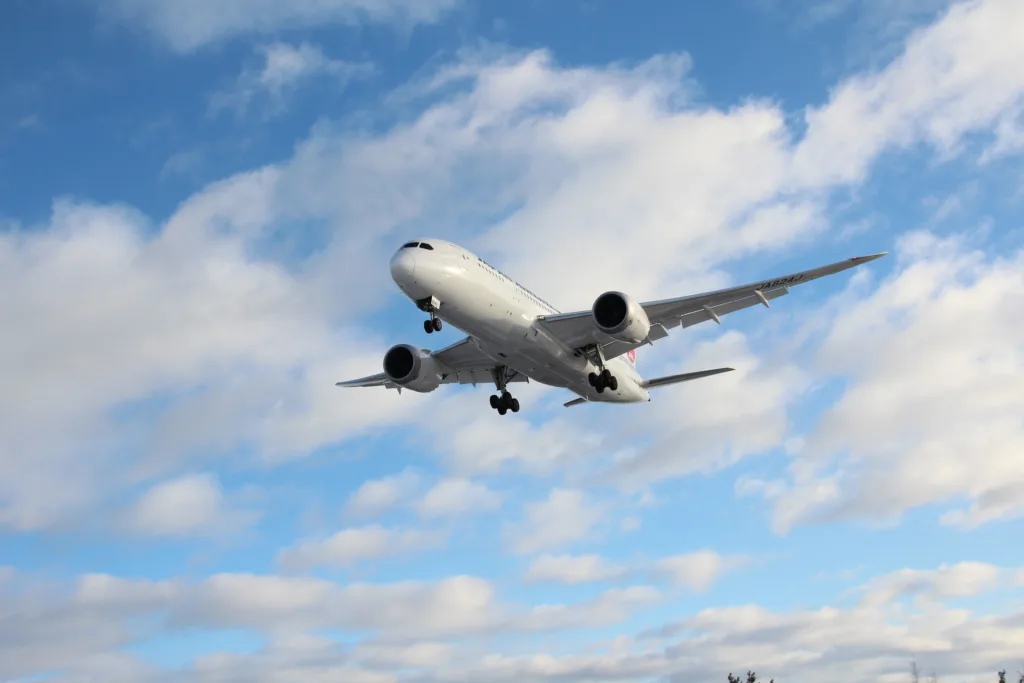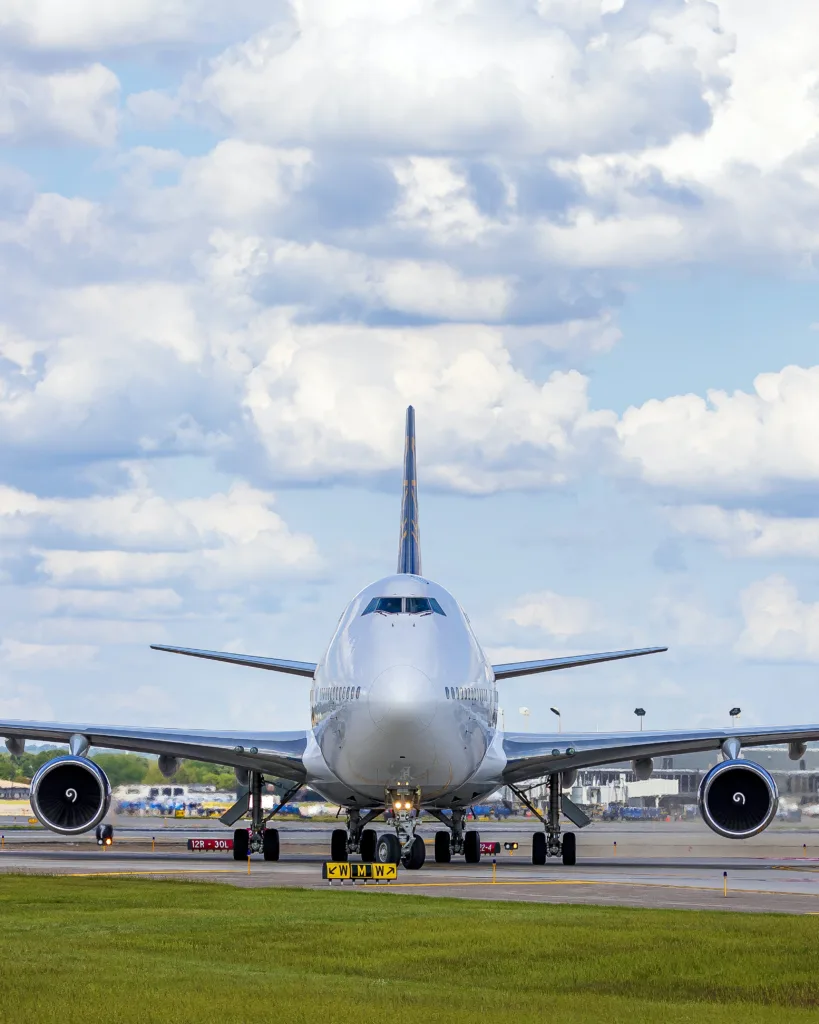Revenue passenger miles (RPM) is a crucial metric used in the aviation industry to measure the volume of passenger traffic and assess the financial performance of airlines. It is a key indicator of an airline’s ability to generate revenue from the transportation of passengers. In simple terms, revenue passenger miles refer to the total number of miles traveled by paying passengers on a particular airline.
To calculate revenue passenger miles, two factors need to be considered: the number of revenue-paying passengers and the distance traveled by the aircraft. The formula for calculating RPM is obtained by multiplying the number of revenue-paying passengers by the distance flown.
For instance, if an airline carries 100 passengers on a flight covering a distance of 500 miles, the revenue passenger miles would be 50,000 (100 passengers x 500 miles). This means that the airline generated revenue from passengers traveling a total distance of 50,000 miles on that particular flight.
Revenue passenger miles are a critical metric for airlines as they provide insights into the demand for air travel and the effectiveness of their operations. By analyzing RPM data, airlines can make informed decisions regarding route planning, fleet management, and pricing strategies.
Furthermore, revenue passenger miles are often used in conjunction with available seat miles (ASM) to calculate important performance indicators such as load factor and revenue per available seat mile (RASM). Load factor is the ratio of revenue passenger miles to available seat miles, indicating the percentage of seats that are occupied by paying passengers. A high load factor suggests that an airline is effectively utilizing its available capacity and maximizing its revenue potential.
Revenue per available seat mile (RASM) is another crucial metric that helps determine an airline’s profitability. It is calculated by dividing the operating income by available seat miles. A higher RASM indicates that an airline is generating more revenue per mile flown, which is a positive sign for its financial performance.
Revenue passenger miles (RPM) are a fundamental measurement used in the aviation industry to assess passenger traffic and gauge an airline’s financial performance. By analyzing RPM data, airlines can gain valuable insights into their operations and make informed decisions to optimize their revenue potential.
What Are Revenue Seat Miles?
Revenue seat miles (RSM) is a widely used metric in the airline industry to measure the revenue generated by an airline per mile flown by a paying passenger. It is a key performance indicator that helps assess the efficiency and profitability of an airline’s operations.
To calculate RSM, the total number of revenue passenger miles (RPM) is multiplied by the yield, which is the average fare paid per mile by each passenger. RPM represents the number of miles flown by paying passengers, whereas yield reflects the revenue generated from each mile flown.
RSM is essential for airlines as it provides insight into their revenue-generating potential based on the distance traveled by passengers. By analyzing RSM, airlines can evaluate the effectiveness of their pricing strategies, identify routes that generate higher revenues, and make informed decisions regarding capacity management.
To illustrate further, here is an example:
Suppose an airline flies 1 million miles in a given period, and the average fare paid by passengers is $0.10 per mile. If the airline’s RSM is $100,000, it means that for every mile flown by a paying passenger, the airline generates $0.10 in revenue. Thus, the RSM reflects the airline’s ability to generate revenue based on the distance traveled by passengers.
Revenue seat miles (RSM) is a crucial metric used by airlines to measure the revenue generated per mile flown by paying passengers. It helps airlines assess their profitability, pricing strategies, and route performance, ultimately aiding in making informed decisions to optimize operations and drive financial success.

What Is Meant By Passenger Miles?
Passenger miles refer to a statistical unit used by public transportation agencies, such as railroads, bus lines, or airlines, to measure the volume of passenger traffic. It denotes one mile traveled by one passenger. This metric helps in understanding the overall distance traveled by passengers and is used for various analytical purposes.
Here are some key points to understand about passenger miles:
1. Definition: Passenger miles represent the total distance traveled by passengers. It is calculated by multiplying the number of passengers by the distance they have traveled.
2. Measurement: Public transportation agencies use passenger miles as a standard unit to quantify the amount of travel undertaken by passengers. It allows them to assess the level of demand, track trends, and plan for future transportation needs.
3. Importance: Passenger miles provide valuable insights into the utilization of transportation services, allowing agencies to determine the popularity of specific routes or services. It helps in evaluating the efficiency and effectiveness of different modes of transportation.
4. Comparison: Passenger miles allow for meaningful comparisons between different transportation modes, such as rail, bus, or air travel. By analyzing the passenger miles generated by each mode, agencies can identify the most efficient and cost-effective options.
5. Planning: Passenger miles data assists transportation agencies in planning and optimizing their services. It helps them identify high-demand routes that require additional capacity or investment. It also aids in forecasting future travel patterns and adjusting schedules accordingly.
Passenger miles are a statistical unit used in the transportation industry to measure the distance traveled by passengers. It helps agencies assess demand, evaluate efficiency, and plan for future transportation needs.
How Do You Calculate Revenue Passenger Kilometers?
Revenue passenger kilometers (RPKs) are a measure used in the aviation industry to quantify the total distance traveled by paying passengers on an aircraft. RPKs are calculated by multiplying the number of revenue-paying passengers on a flight by the distance the aircraft traveled. This metric provides valuable insight into the overall passenger demand and utilization of an airline’s services.
To calculate RPKs, you need two key pieces of information: the number of revenue-paying passengers and the distance flown by the aircraft. Here is a step-by-step breakdown of the calculation process:
1. Determine the number of revenue-paying passengers: This refers to the total count of individuals who purchased tickets and boarded the aircraft. It is important to exclude non-revenue passengers, such as airline employees or crew members, from this count.
2. Measure the distance traveled by the aircraft: This can be done by using various methods, such as using flight tracking data or relying on the airline’s operational records. The distance should be measured in kilometers for consistency.
3. Multiply the number of revenue-paying passengers by the distance flown: Once you have the passenger count and the distance traveled, multiply these two values together to obtain the RPKs. The result will be expressed in passenger-kilometers.
For example, let’s say a flight has 200 revenue-paying passengers and covers a distance of 1,000 kilometers. The calculation would be as follows:
RPKs = Number of revenue-paying passengers x Distance flown
= 200 passengers x 1,000 kilometers
= 200,000 revenue passenger kilometers
It is worth noting that RPKs are often compared to available seat kilometers (ASKs) to assess the level of passenger demand and the efficiency of an airline’s operations. ASKs represent the total number of seats available for sale on an aircraft multiplied by the distance flown. By comparing RPKs to ASKs, airlines can calculate the passenger load factor, which indicates the percentage of available seats that are filled with revenue-paying passengers.
Revenue passenger kilometers are a crucial metric used in the aviation industry to measure the distance traveled by paying passengers on an aircraft. By multiplying the number of revenue-paying passengers by the distance flown, airlines can obtain RPKs and gain insights into passenger demand and operational efficiency.
What Does Rpm Mean In Aviation?
RPM, in the context of aviation, stands for “revolutions per minute.” It is a measure used to indicate the speed at which an aircraft engine’s crankshaft is rotating. The crankshaft is a crucial component of the engine that converts the reciprocating motion of the pistons into a rotary motion.
In aviation, RPM is an important metric as it provides information about the engine’s performance and efficiency. It helps pilots and mechanics monitor the engine’s speed and ensure it is operating within the designated parameters.
Some key points to note about RPM in aviation are:
1. RPM is displayed on a tachometer, which is a gauge that shows the number of revolutions per minute of the engine’s crankshaft. Each engine on an aircraft typically has its own tachometer.
2. The RPM range for aircraft engines can vary depending on the type and model. Typically, smaller piston engines used in general aviation aircraft have a range of around 2000 to 2700 RPM. Larger turbine engines used in commercial aircraft can have much higher RPM ranges.
3. Monitoring the RPM is crucial for engine health and safety. Operating an engine at too low or too high RPM can lead to inefficient performance, excessive wear and tear, and potential engine failure. It is important for pilots to follow manufacturer-recommended RPM ranges and guidelines.
4. RPM is particularly critical during takeoff and landing. Pilots need to ensure that the engine is running at the correct RPM to generate the necessary power and thrust for a successful takeoff or landing.
RPM in aviation refers to the revolutions per minute of an aircraft engine’s crankshaft. It is a vital metric for monitoring engine performance, efficiency, and safety. Pilots and mechanics rely on tachometers to ensure the engine is operating within the designated RPM range.

Conclusion
Revenue passenger miles (RPM) is a crucial metric in the aviation industry that measures the volume of passenger traffic. It is calculated by multiplying the number of revenue-paying passengers aboard an aircraft by the distance the aircraft traveled. RPM provides valuable insights into an airline’s performance and efficiency, as it directly correlates to the revenue generated by passenger transportation.
By analyzing RPM, airlines can assess their market demand, route profitability, and overall operational effectiveness. A higher RPM indicates a greater number of passengers and longer distances traveled, which ultimately translates into increased revenue for the airline. This metric is instrumental in determining the success and profitability of an airline, making it an essential aspect of financial analysis and decision-making.
Furthermore, RPM is often compared to available seat miles (ASM), which represents the total number of seats available for sale multiplied by the distance flown. This comparison enables airlines to evaluate their load factors and capacity utilization, providing insights into their ability to maximize passenger revenue. A higher RPM-to-ASM ratio indicates efficient utilization of available capacity and signifies a more lucrative operation.
Revenue passenger miles is a key performance indicator that airlines closely monitor to measure their success, profitability, and efficiency. As the aviation industry continues to evolve, understanding and effectively managing RPM will remain critical for airlines to thrive in a competitive market.
